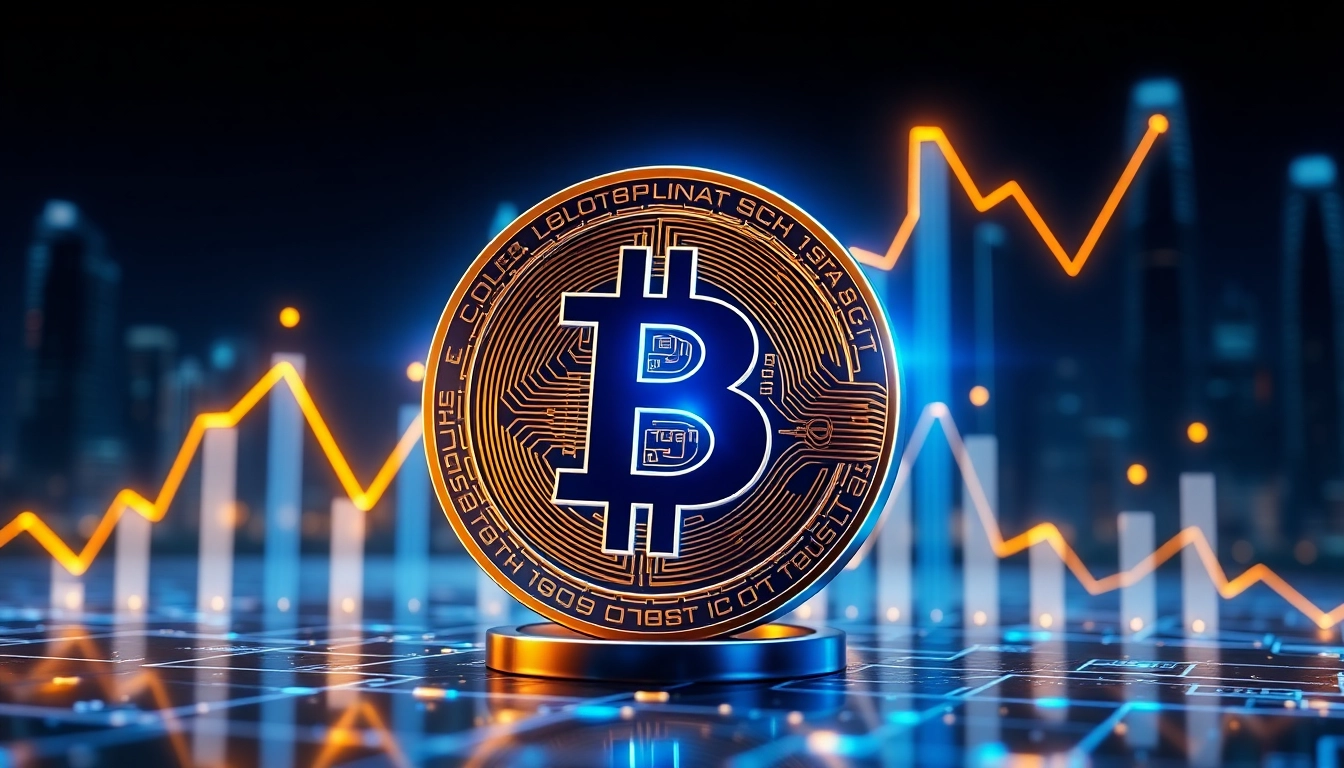
How Binance’s Resumption of Futures Trading Reflects Market Confidence in Bitcoin’s Next Phase
Introduction to Binance’s Recent Futures Trading Resumption
In a significant development within the cryptocurrency ecosystem, Binance, one of the world’s largest crypto exchanges, has resumed its futures trading platform following a recent outage. The outage, which temporarily halted trading activities, sparked widespread concern among traders and investors about market stability and exchange reliability. Notably, this incident comes at a time when market confidence in digital assets, particularly bitcoin, remains both fragile and resilient, depending on the perceived strength of exchange infrastructure and strategic positioning. Binance’s swift return to normal operations prompts a deeper analysis of whether this was merely a technical glitch or a calculated move reflecting market confidence and operational maturity.
Understanding the Trading Outage and Its Impact on Bitcoin
The outage, reportedly caused by a technical glitch in Binance’s trading engine, temporarily disabled futures trading, leading to uncertainty among participants. During this period, the price trajectory of bitcoin and other cryptocurrencies experienced notable volatility, underscoring the interconnectedness of exchange stability and market psychology. Historical instances reveal that such outages can trigger ripple effects—ranging from rapid price swings to erosion of retail confidence. Market analysts observed that during outages, traders often react by withdrawing or holding assets on alternative platforms, disrupting liquidity and trading signals. The incident also raised questions about the resilience of Binance’s infrastructure, especially given its critical role in facilitating liquidity for institutional and retail traders alike.
For example, the immediate market reaction saw bitcoin’s price dipping briefly, reflecting traders’ concerns about potential manipulation or unresolved system vulnerabilities. As exchanges recover and restore services, the importance of transparency and communication becomes evident, influencing ongoing investor trust and future market behavior.
Significance of Binance’s Market Role and Recovery Timing
Binance’s dominance in the crypto trading arena makes its operational health a barometer for the broader market sentiment. Its swift recovery signifies not just technical resilience but also strategic decisive action. From a market psychology perspective, rapid restoration minimizes the damage to trust—highlighting Binance’s commitment to reliability. This timely recovery is critical in maintaining its competitive edge, especially when retail investors and institutional players scrutinize exchange stability.
Additionally, Binance’s prompt resumption potentially mitigates downside risks associated with prolonged outages. Market timing is crucial; hours of downtime can cascade into reputation loss and volatility, whereas a quick fix reassures traders that the platform remains a dependable venue for trading large positions, including derivatives and futures, especially in volatile terrains where bitcoin often leads the charge.
Analyzing the Glitch Versus Smart Strategic Move
Technical Causes Behind the Outage and Resolution
Initial investigations suggest the outage stemmed from a technical malfunction—possibly a server overload or software bug—common challenges faced by high-volume exchanges. In complex systems handling thousands of simultaneous trades, even minor glitches can cascade into significant disruptions. Binance’s engineering team quickly identified and isolated the fault, deploying fail-safes and backups to prevent data loss and widespread chaos.
However, some industry insiders speculate whether the outage was purely accidental or strategically timed to manage market expectations. Given Binance’s extensive infrastructure investments, the rapid resolution highlights adaptive engineering solutions, including auto-shutdown protocols and increased server capacity, designed for real-time fault tolerance.
Market Reaction: Price Movements and Trader Sentiments
Throughout the outage, bitcoin experienced minor fluctuations, primarily driven by traders’ apprehensions and speculative activities. Once trading resumed, a slight rebound in bitcoin’s price indicated renewed confidence. Yet, the event also generated buzz on social platforms, where traders debated whether the incident was a harbinger of systemic issues or an isolated blip.
Sentiments ranged from cautious optimism to outright skepticism, emphasizing the importance of clear communication from Binance and transparency about technical challenges. Historically, such incidents can either shake confidence or serve as lessons, depending on how exchanges handle post-event disclosures and future safeguards.
Implications for Bitcoin and Cryptocurrency Trading Strategies
The outage underscores the necessity for traders to diversify and implement risk management strategies. Relying solely on a single platform exposes traders to technical risks; thus, savvy investors maintain portfolios across multiple exchanges or utilize decentralized finance (DeFi) tools. Moreover, algorithmic traders and market makers might incorporate contingency plans, such as placing orders on backup platforms or setting alerts for system downtimes.
This incident also highlights the importance of real-time data analysis and market monitoring tools—enabling traders to promptly adapt to volatility induced by technical issues. As the crypto landscape matures, integrating such risk protocols becomes essential for long-term sustainability and profitability.
Market Confidence and Future Outlook for Bitcoin
How Binance’s Actions Affect Institutional and Retail Trust
Binance’s rapid recovery bolsters confidence across diverse investor segments. Institutional traders, often concerned with system robustness, see this as a testament to Binance’s technical competence. Retail traders, who are more sensitive to outages and delays, may feel reassured that the platform maintains high standards of resilience.
This incident may also serve as a catalyst for Binance and other exchanges to ramp up transparency, invest in infrastructure upgrades, and communicate proactively during crises. Building such trust is crucial for the broader adoption of cryptocurrencies like bitcoin, which continue to fight perceptions of volatility and vulnerability.
Predictions for Bitcoin’s Price Trends Post-Outage
While short-term fluctuations are inevitable, most analysts predict that bitcoin’s long-term trajectory remains intact, provided exchanges maintain robustness against operational risks. The overall trend appears bullish, reinforced by institutional interest and macroeconomic factors favoring digital assets as hedges against inflation. A resilient exchange infrastructure paves the way for sustainable growth.
In the coming months, traders should monitor key metrics such as network hash rates, macroeconomic indicators, and regulatory developments, all of which influence bitcoin’s future price movements.
Key Factors to Monitor for Ongoing Market Stability
- Exchange resilience and technological upgrades
- Regulatory responses and compliance updates
- Institutional adoption metrics and on-chain activity
- DeFi ecosystem developments and liquidity flows
- macroeconomic conditions influencing investor sentiment
Lessons Learned and Industry-Wide Impact
Risk Management in Crypto Exchanges
The recent outage underscores the critical need for comprehensive risk management frameworks—covering technical redundancies, cybersecurity measures, and operational protocols. Leading exchanges are investing heavily in cloud-based solutions, real-time monitoring, and disaster recovery plans to prevent recurrence.
Enhancing Infrastructure for Reliable Trading
Blockchain exchanges must prioritize upgrading their infrastructure, including scalable architectures, stress-testing under high loads, and implementing machine learning algorithms favoring predictive fault detection. These enhancements reduce downtime and mitigate cascading failures.
Implications for Investors and Regulatory Watchdogs
Investors are now more likely to scrutinize exchange transparency and stability records before committing assets, especially relevant in the context of rising regulatory oversight globally. Regulators, in turn, may require stricter audit and reporting standards, pushing exchanges toward industry-wide best practices to protect investor interests.
Practical Steps for Traders During Exchange Outages
Assessing Market Conditions and Timing Trades
During outages, traders should avoid impulsive moves—waiting for official confirmation of system stability before executing large trades. Keeping abreast of real-time updates via social media, exchanges’ official channels, and news outlets is essential for informed decision-making.
Security Tips for Protecting Your Bitcoin Assets
- Use hardware wallets (cold wallets) for long-term holdings
- Enable two-factor authentication on all accounts
- Maintain secure, updated backups of private keys
- Beware of phishing attempts during system downtimes
Leveraging Alternative Platforms and Tools
In times of outage, diversify by maintaining accounts on multiple exchanges or decentralized platforms. Tools like multisignature wallets and cross-platform portfolio trackers further enhance security and flexibility, ensuring continuous access to assets regardless of individual platform outages.


